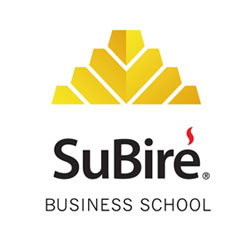World Headquarters for the Global Network for A Future Without Poverty
The center will provide initially 6 fulltime positions to help strengthen the local economy. The center will save a historic land mark and provide training for craftsmen in green technologies retrofitting of a historic building. The center will draw students from countries around the world. Currently we have 90 international students that have signed up for the first classes in language and culture training.
What the Center Will Do
•The center demonstrates how to build a thriving local economy by creating jobs that utilize environmental and human resources.
•The center offers educational and micro enterprise courses.
•The center provides enhancement of international awareness through multicultural interactions.
•The center provides a network of global internships and training opportunities.
•The center provides a platform for an international dialogue on a future without poverty.
The center has two divisions: the Empowerment Division and the Global Entrepreneurship Division.
The Empowerment Division offers a model for local sustainable community development that will be replicated in communities around the world.
The Global Entrepreneurship Division offers international services to individuals from a network of nations that at this time include Cameron, China, Mexico, Canada, Malawi, Ethiopia, Bangladesh, India, Jamaica, Ghana, Haiti and Indian Nations in the United States.
The empowerment division will use an existing underutilized historic building as an example of creative community revitalization. The center will provide education courses, cultural exchanges and a micro enterprise incubator to encourage businesses which supports sustainable jobs development.
The Global Entrepreneurship division programs:
•Green Technology Program
•Marketability Program
•Trade Apprentice Program
•Culinary Program
•Micro Enterprise Incubator
The Empowerment Division Programs:
•Green Technology Program
•Marketability Program
•Trade Apprentice Program
•Culinary Program
•Micro Enterprise Incubator
Financial goal for the project $2,500,000
Solar Development Project for Zacatecas Mexico
The objective of this project is to establish a thriving self supporting solar utility cooperative in Zacatecas Mexico.
The coop model is based on a network of administration, assembly, installation and maintenance workers that are based in communities across the state. The basic business model is based on identifying, training and supporting local individuals to be responsible for all aspects of maintaining a viable solar electric cooperative. The cooperative will be established by Future Without Poverty a non –government organization working in cooperation with the state and federal governments.
The goal of the cooperative in the first three years is to provide basic electric needs to all residences in the state of Zacatecas (approximately 55,000) and provide electric service to all schools (approximately 264) that do not currently have electric service. To reach this goal the cooperative will need to raise approximately $ 55,000,000 over the next three years.
Basic electric service in a residence will provide wiring for lights, electrical outlets and enough power to provide basic lighting and run a radio and or TV. The basic installation in a school will provide enough power to run at least two computers, printer, DVD player, TV, lights and radio. All systems can be expanded to increase the capacity of the service based on individual needs. Expansion of the basic system can be financed by the individual owners or communities at very favorable rates. Most system expansions will be financed over a 10 to 20 year repayment schedule.
The Solar Electric Cooperative will be based in Zacatecas and will establish a partnership with several education institutions to provide a training program to certify individuals to fill the multiple positions that the cooperative will create. It is estimated that over 100 jobs will be created. These positions will include a network of administration, assembly, installation and maintenance workers that are based in communities across the state.
The magnitude of this project will allow the cooperative to aggressively seek bids from potential vendors and suppliers creating the opportunity to reduce the costs of the materials and supplies below traditional wholesale pricing. As an example the deep charge silicon gel battery that we would possibly use for our residence installation retails for $350.00 it wholesales for $250.00 and is available directly from the manufacturer to dealers for $200.00. It may be possible to reduce the price even below the $200 level when we order the batteries in lots of several thousand at a time. This advantage alone can save over $8,000,000 on this one component. This allows the cooperative to provide a higher quality product that will provide a better level of service for a very reasonable cost per installation.
One of the keys to the success of the cooperative will be the number of locally certified installers and maintenance workers who will be responsible for the success of the project. This model provides the local support and training necessary to build a reliable installation and maintenance service staff. The project is designed so that the individual resident installations will pay an annual maintenance fee that will be based on a sliding scale that is adjusted by the ability to pay for the maintenance of the system. The systems are designed to have a lifetime service period of 3 years for the battery and 15 years for the rest of the system. On the average it will cost about $100 per year per installation to maintain the system. It is estimated that the income will be from $10 to $240 per year per installation based on ability to pay. The cooperative will generate an income of $2,000,000 the second year of operation and will go to $4,000,000 the third year and be $6,000,000 by the fourth and subsequent years. This income will provide employment for an administrative and maintenance staff of approximately 50 people. This will be a sustained level of employment after the initial 3 year installation period has been completed.


